Over 125 years of hospitality
Since 1899, the Dolder Grand in Zurich has been synonymous with exceptional hospitality. What began as a ‘Sanatorium and Wildlife Park’ amidst stunning natural surroundings, complete with a funicular connection to the city, has evolved into a luxurious city resort offering exquisite cuisine, a renowned art collection, and an impressive spa. Architects from various eras, spanning the Belle Époque to high-tech architecture, have left their mark on the grand hotel. International guests have shaped the history of our establishment, while the Dolder Grand’s deep connection to Zurich continues to highlight our roots. We invite you to embark on a journey through time at the Dolder Grand, which will continue to embody visionary luxury hospitality for the next 125 years.
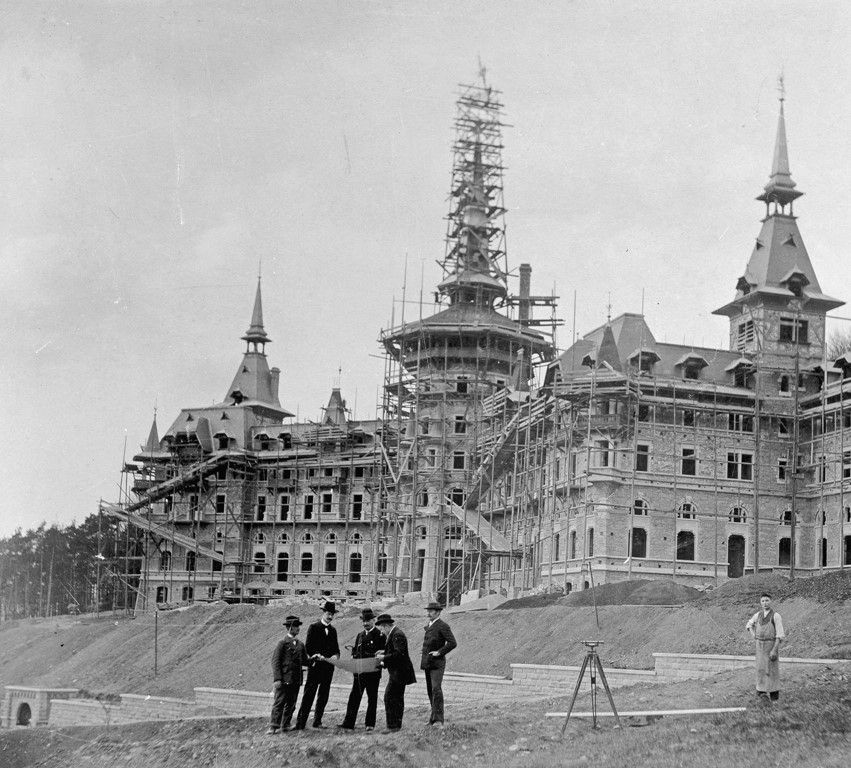
The founding years
The beginning of the Dolder Grand’s story was characterised by three essential values – bold entrepreneurship, architectural skills and a forward-looking vision for this magnificent patch of nature on the Adlisberg above Zurich.
The first of these came courtesy of Zurich-based entrepreneur Heinrich Hürlimann (1841–1910). As he gazed over the Alps and the city, he imagined creating a new form of recreation and leisure on the Adlisberg. The resourceful self-made man commissioned Swiss architect Jacques Gros (1858–1922) to make this vision a reality by building the Dolder Grand Hotel & Curhaus. Jacques Gros was originally a specialist in Swiss wood construction, who drew inspiration from researching farmhouses. This put him in a position to combine the technical requirements of a modern hotel with Swiss utopia and nostalgia. He not only created the Grand Hotel in the Swiss timber construction style popular at the time, but also shaped the architecture of the Zürichberg with the Dolder Waldhaus, the Pavilion in the Dolder Park and the villas.
The Dolder Grand Hotel & Curhaus opened on 10 May 1899. Kitted out with 220 beds, a reading and billiard room, a café restaurant, covered verandas, terraces, two lifts and telephones, it offered a rather understated level of luxury for that time. An overnight stay in a double room during the peak season cost between CHF 12.00 and CHF 20.00 back then.
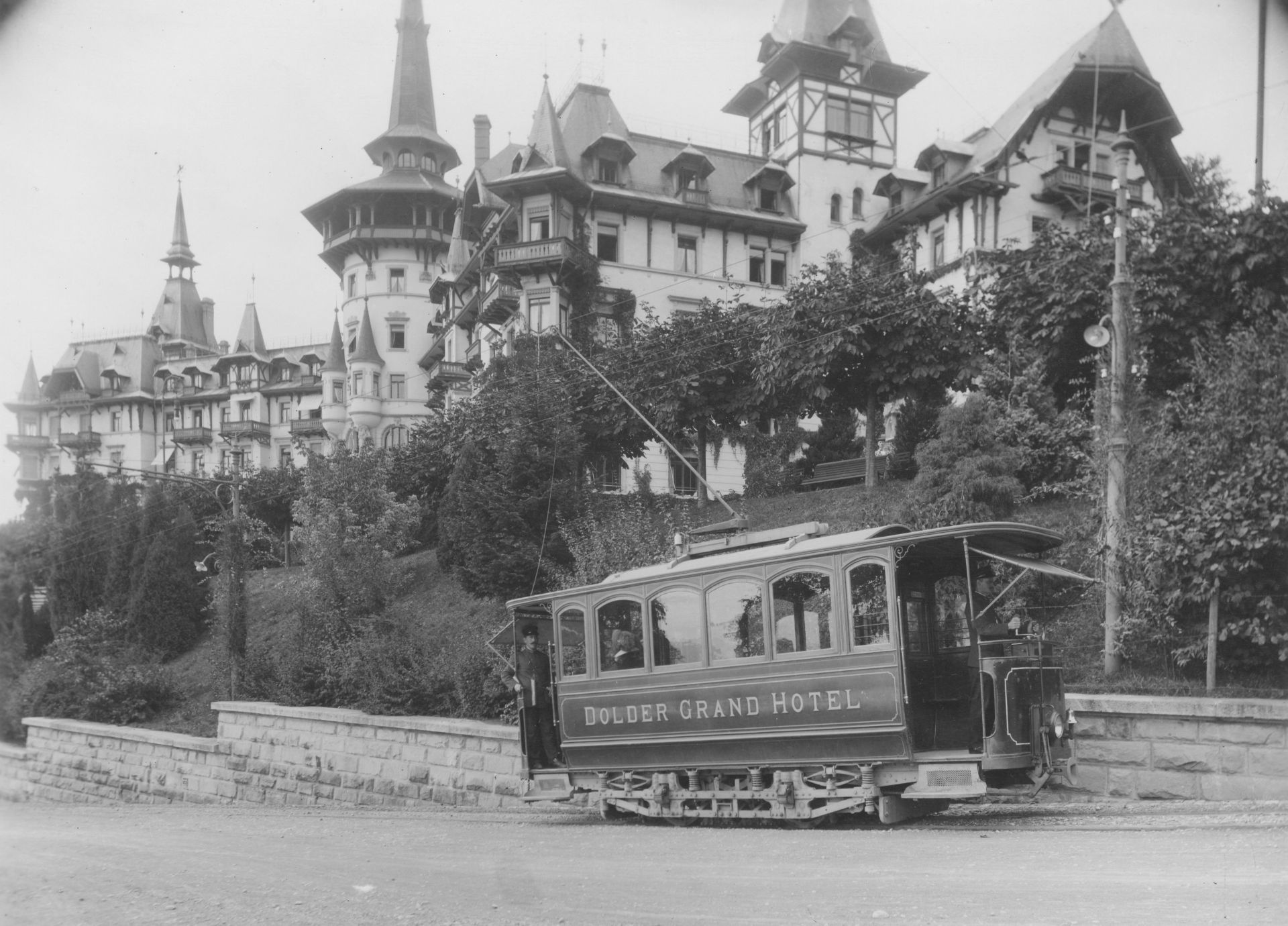
Conversion to all-year-round operations
To host foreign guests wanting to stay permanently in Zurich after the First World War, the Hotel switched from seasonal operations to year-round opening from 1915 onwards. By 1924, all guest accommodation received running water or private bathrooms, a staff wing was added, and the main entrance on the lake-facing side made way for the “Rotonde”, a semi-circular restaurant with magnificent views of the lake and the mountain landscape. Over the next few decades, the Rotonde would be “the” meeting point for Hotel guests and Zurich residents.
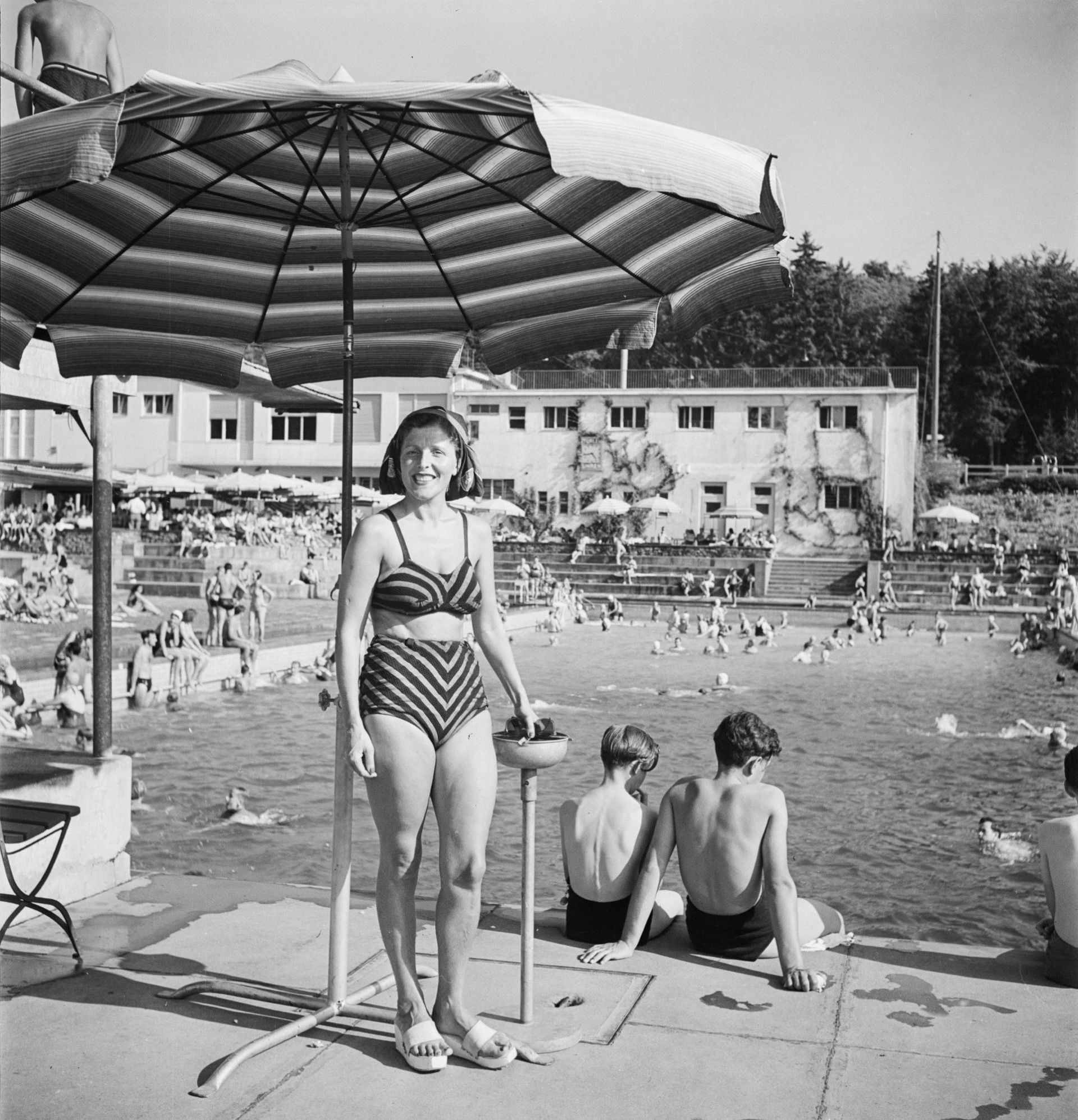
Golf, swimming, ice skating: after 90 years, Dolder Sports remains pioneering
One of the milestones in the history of the Dolder Grand Hotel is the establishment of the Dolder Sports facilities at the beginning of the last century.
At this time, the Dolder golf course, which was set up in 1907 on the south slope of the Adlisberg, was one of the popular leisure activities, in addition to tennis, enjoyed by the discerning guests at the upscale Hotel. Numerous advertisements in national and international newspapers as well as in travel brochures attracted American physicians, English lawyers and professional golfers from around the world to tee off on the south slope of the Adlisberg in a picturesque setting just below the Hotel.
In 1931, this was followed by the Dolder Kunsteisbahn (open-air ice-skating rink), created by the architects Witzig and Begert. At the time, it was Europe’s largest and most state-of-the-art ice rink, and the first in Switzerland to have the technical machinery and infrastructure for freezing water. In no time at all, the ice rink developed into the city’s most popular leisure facility. Professional competitions such as the World Figure-Skating Championships in February drew additional crowds. Even in the present day, the Kunsteisbahn (open-air ice-skating rink), run in a public-private partnership with the city of Zurich, spans an area of 6,000 square metres and offers a varied, atmospheric way for ice-skating enthusiasts young and old to indulge in winter fun.
In 1934, the Dolder wave pool was created nearby, in the midst of beautiful beech and fir forests. The vision behind this was stated in the Swiss Bauzeitung of that same year: “the realisation that bathing in crystal-clear basin water, kept at a constant temperature, and artificial waves is preferred by many to bathing in the lake.” The project was spearheaded by architect Emil Rein in the modernist architectural style of the time, which focused on functionality and practicality with clean lines and geometric shapes. The pool, which was designed as the first family-run outdoor pool and garden pool in the city of Zurich, was beloved by visitors and the press. Visitors saw it as a place of “exercise hygiene in ozone-rich mountain air”, praising the combination of entrepreneurial foresight, technical progress and dedication to public health. In addition to the range of sporting activities available, there was also entertainment on offer, such as fashion shows, dance events and championships for local and national swimming associations.
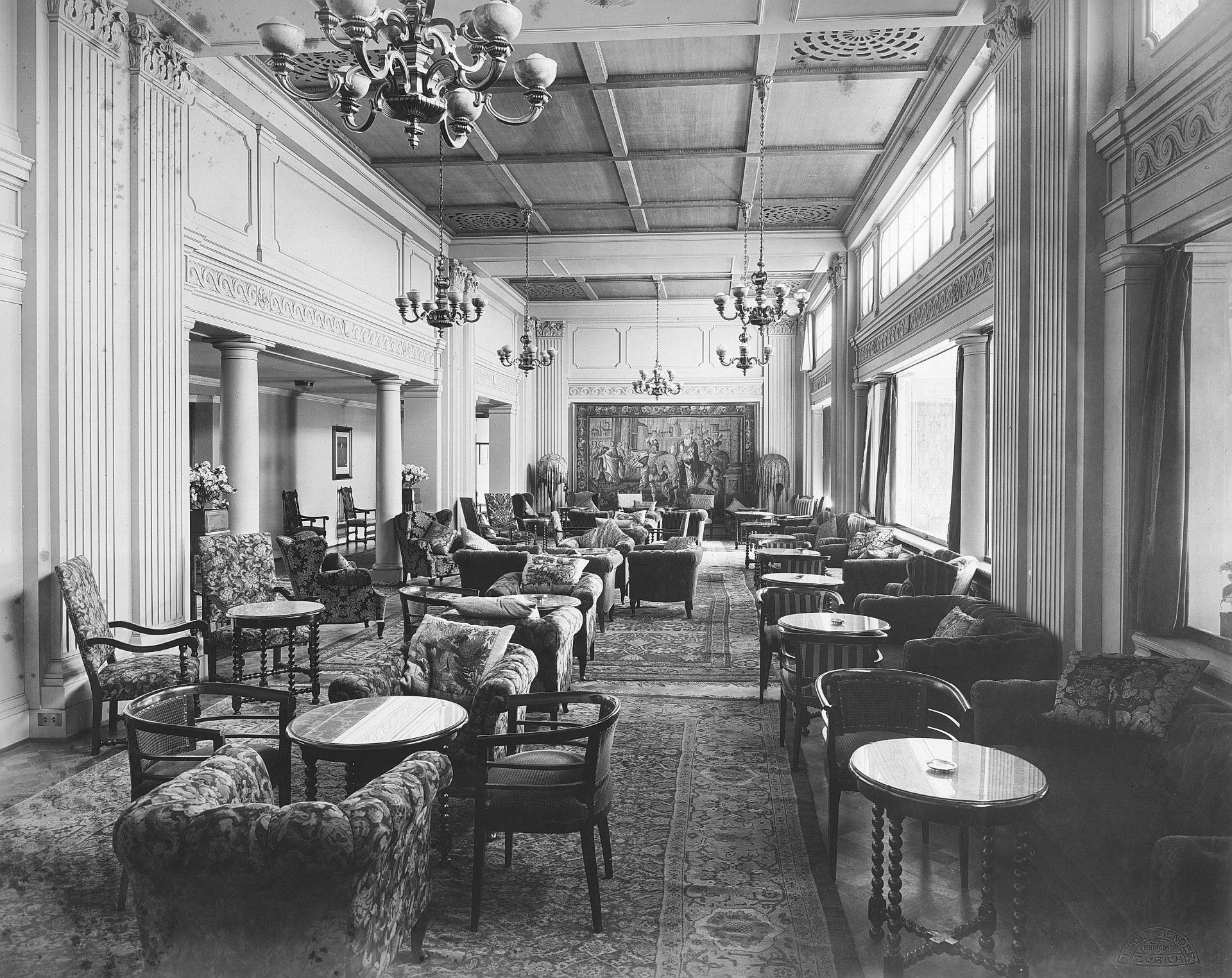
The lean war and post-war years
The collapse of international tourism during the war years had a severe impact on the Grand Hotel. Although it even had managed to remain in the black during the First World War as a place of refuge for emigrants, its prime clientele stayed away this time. In 1940, only a dozen guests stayed at the Hotel, the most loyal among them resident there until the end of the war. Among them was a certain Count B. who – as the story goes – rented a whole suite of rooms for himself, his son, a governess and a few hundred birds, and remained there the end of the war. Nevertheless, according to its Annual Report of 1942, the Grand Hotel was more popular than ever for social events, even in wartime. Starting in 1946, the number of guests began to pick up. Many American military holidaymakers who either stayed at the Waldhaus or at the Grand Hotel (depending on their status) helped bolster this trend. It would take until the early 1950s, though, before guests from other European countries were able to return to the Dolder Grand again.
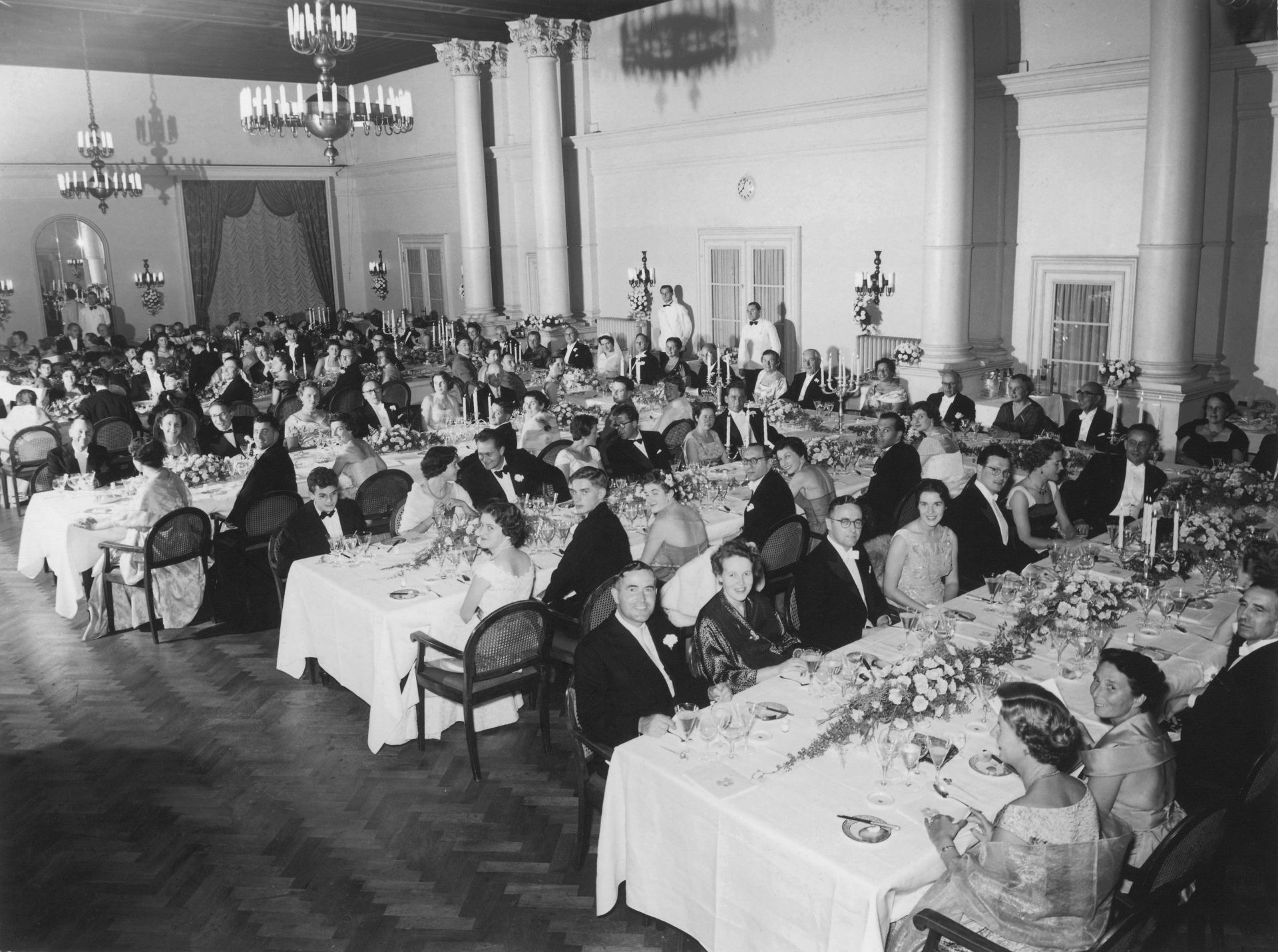
The boom years and new commitments
As guests from European countries returned at the beginning of the 1950s, this marked a boom era for the Grand Hotel. The summer months were shaped by the Hotel regularly being at full capacity, and in 1953, Hotel Director Krähenbühl proudly announced the highest turnover and the highest profit since the Hotel was founded. But this growth went hand-in-hand with new commitments. When it came to how and where to invest, it was important to strike a balance between major projects and pragmatic actions, all while maintaining operations.
Innovative steps were taken to meet the growing need for conference facilities.
New conference rooms were created with space for 40 to 50 people. While meetings were modest in scope at first, they evolved into an important branch of business with state-of-the-art events of global importance.
Guests now also required the convenience of a private bathroom. By 1953, 100 of the 150 rooms were been furnished with private bathrooms to satisfy these higher expectations. The Hotel management also recognised the demand for parking, with more and more guests travelling by car. Here, too, the approach was adjusted pragmatically to suit the needs at hand, until the Hotel’s own car park was finished in 1992.
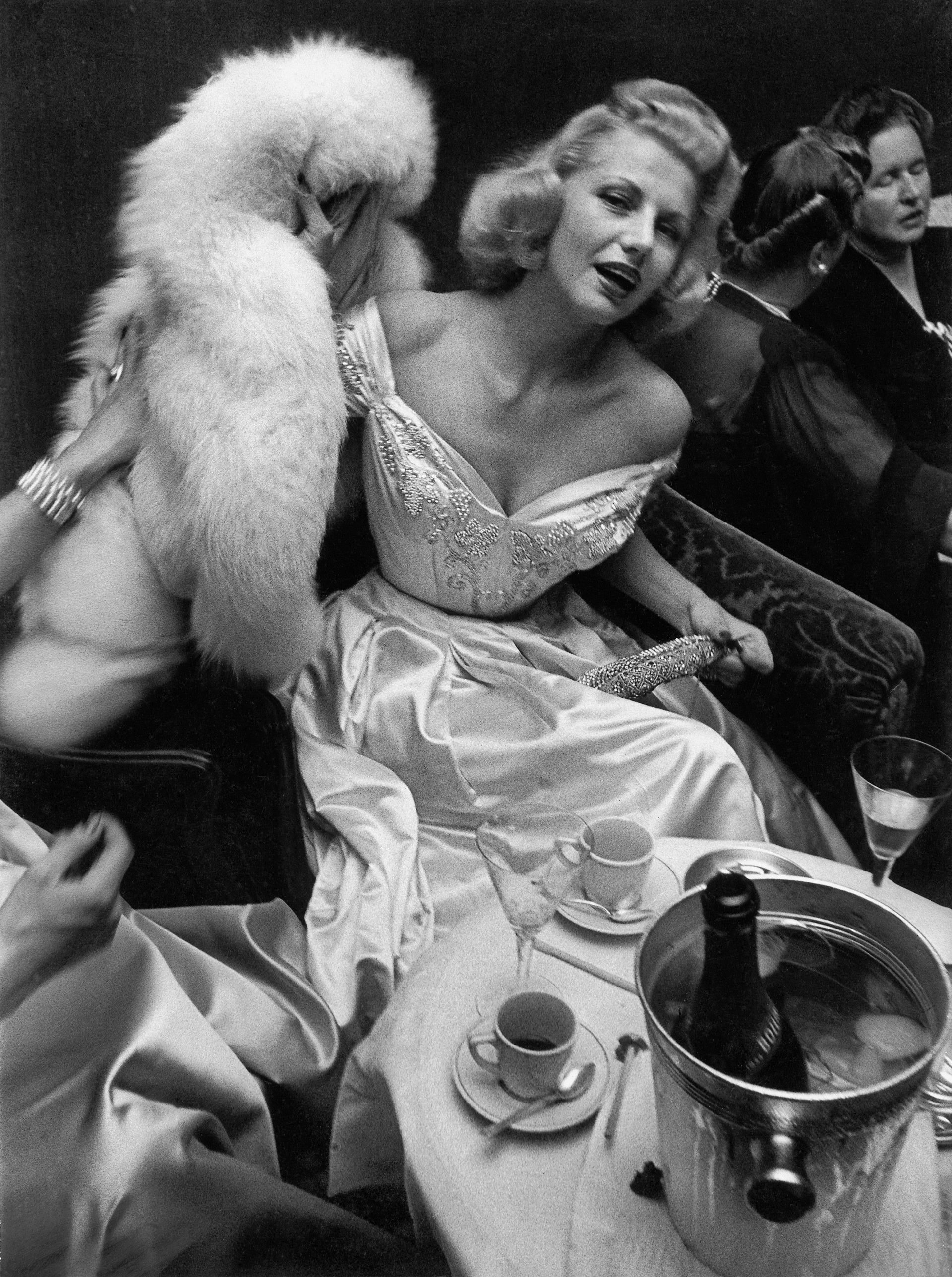
The golden years: new guests and new buildings in the 1960s
The Dolder Grand opened a new building with 60 exclusive rooms in 1964. Swiss architect Hans von Meyenburg was responsible for the expansion; the original symmetry of the Hotel had to give way for this. Inspired by the “New Building” movement, Meyenburg met the need for additional space in a deliberately reserved way.
This saw Hotel management reacted to the steadily increasing number of visitors in the 1960s. They were particularly proud of the famous guests staying at the Hotel. Its customer base was becoming increasingly global, as guests came from not only the USA and Europe, but increasingly from the Middle East and Asia. Over the following years, the Grand Hotel continued to be a meeting point for royalty, politicians and heads of business, as well as serving as a stage for those working in the entertainment and film industries.
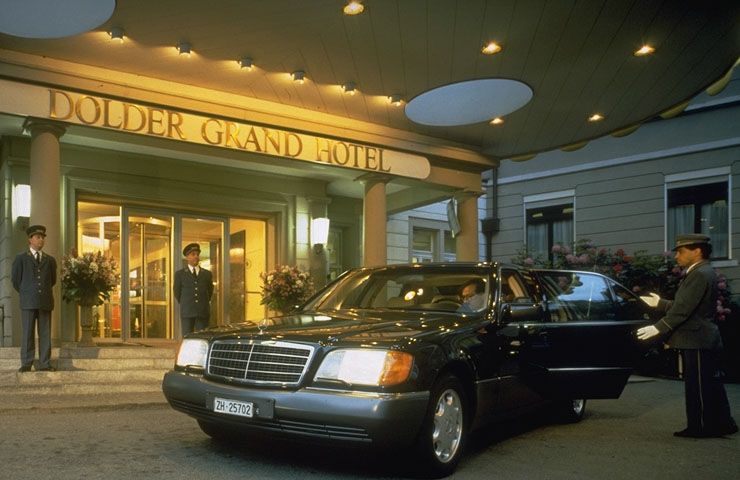
Consolidation of prosperity and reorientation phase
The Shah of Persia visited the Dolder Grand in 1975. In subsequent years, Henry Kissinger, Nelson Mandela, international film stars and artists such as John Wayne, Richard Widmark, Heinz Rühmann, Sophia Loren, Curd Jürgens, Roger Moore and Artur Rubinstein came to the Grand Hotel, too. Prince Charles himself was a guest on the Adlisberg in 1980.
After successful years came challenging times. It was clear by the end of the nineties that significant investment was required to ensure that the Hotel could retain its place in the top class of the international luxury hotel industry. Nevertheless, in the final years before the Hotel closed its doors, celebrities and statesmen such as Nelson Mandela, Elizabeth Taylor, Michael Jackson, Luciano Pavarotti, Prince Philip and Mikhail Gorbachev signed their names in the guest book.
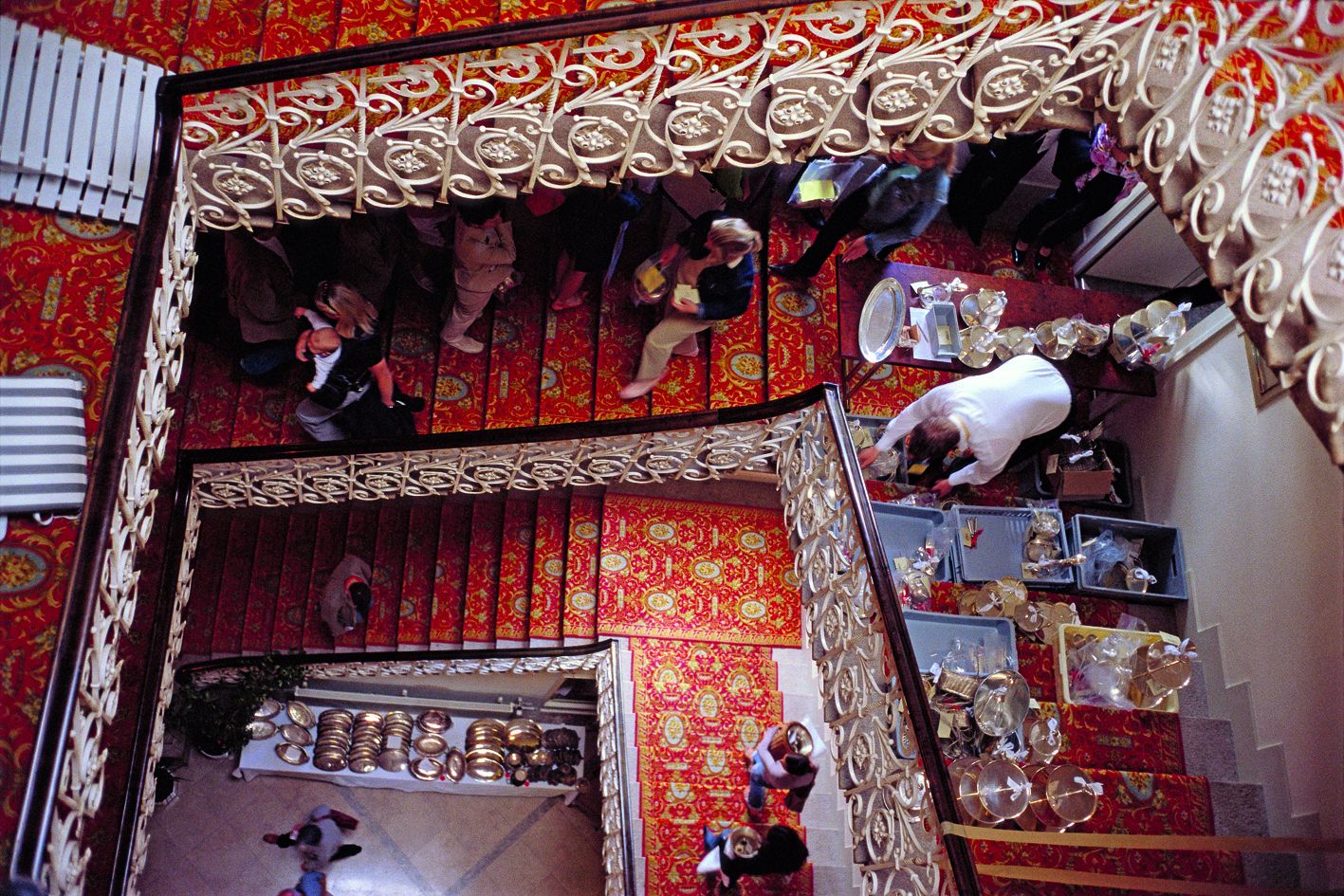
From the Belle Époque to the 21st century – the grand project
Once again, it was the factors that fostered the triumph of the founding years which drove the grand vision of change a century later. Investor Urs E. Schwarzenbach, who has held the majority of shares since 2001, epitomises the bold entrepreneurship of the 21st century. He ensured that the financing for the renovation work at the Dolder Grand Hotel was secure. More important, however, was his passion for building and the belief that architectural and artistically challenging construction could be achieved in a financially viable way if the investment horizon was far enough in the future. His motto: high-quality concepts and materials will continue to hold their value in 30 years’ time.
In the same year, renowned architect Lord Norman Foster was invited to Zurich. Innovative and visionary design shapes Foster’s architectural style, which is characterised by clean lines, modern materials and innovative concepts that are often focused on sustainability and energy efficiency.
The process of removing all buildings constructed after 1899, restoring the historic Main Building and its three striking towers and adding two modern wings was radical and trailblazing.
In turn, the most original element of the building became a landmark for its future as a modern City Resort.
The Dolder Grand reopened in April 2008. With 175 rooms and suites and a spa encompassing 4,000 square metres, it offered tranquillity, relaxation, a stunning view and security for prominent guests in a location close to the city. 12,000 visitors came to the Adlisberg during a three-day open house event to take a look at the revamped Dolder Grand.
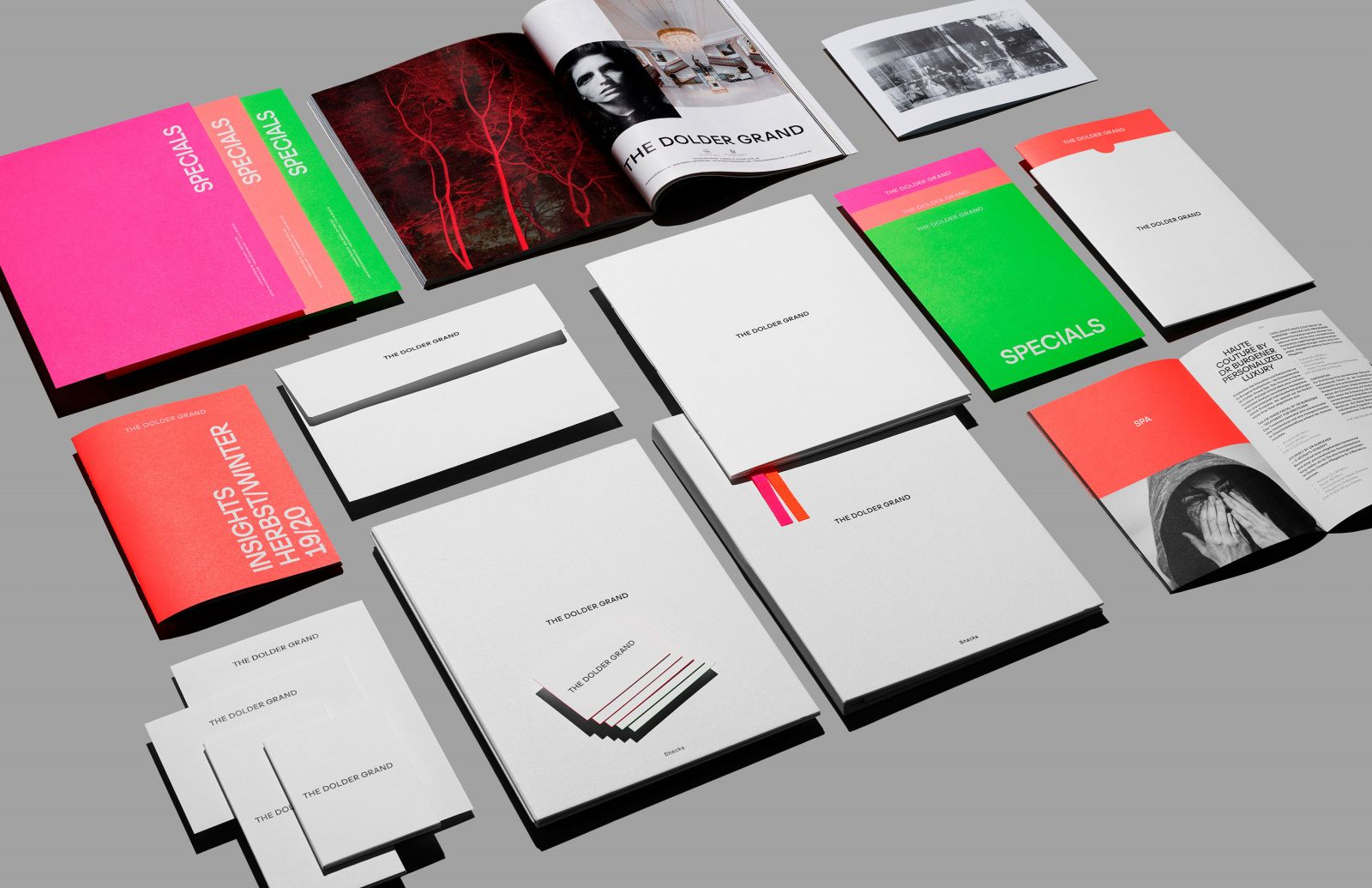
Rebranding
This comprehensive rebranding paid tribute to the history of the Dolder Grand, a property steeped in tradition, and shifted the focus towards the future. The guiding principle of the new communication: heritage and vision.
Heritage is brought to life in contemporary fashion at the Dolder Grand and pleasure celebrated in the here and now.
The rebranding was implemented in a minimalist colour scheme and with streamlined visual imagery. It is reflected in a proprietary Dolder font, the redesigned website and attractive brochures.
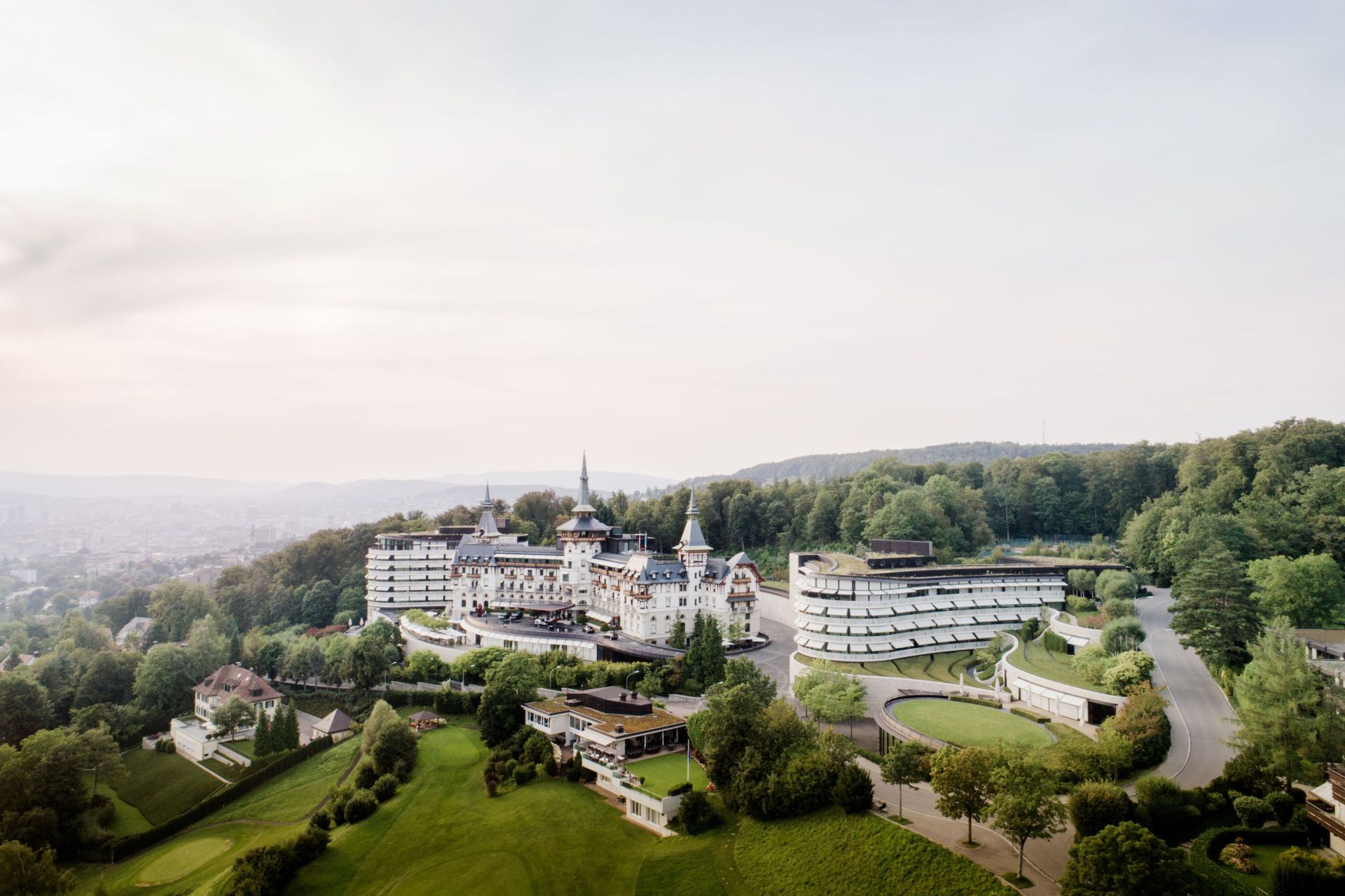
New technologies for personalised service
Robots are used in the areas of housekeeping and food and beverage, for example, to support the bar team with transporting food orders along the long corridors behind the scenes. This means that there is more time for employees to take care of their guests personally and with even more focus. This also includes accepting the modern technology of cryptocurrency as a payment option: the Dolder Grand is the first hotel in Switzerland to offer this.
Acting in the interests of sustainability
The Dolder Grand is also one of the country’s leading hotels in terms of sustainability. The Dolder Grand underscores this commitment with its memberships of Responsible Hotels of Switzerland, Swisstainable Leading and Sustainability Leaders so it can keep offering its guests five-star deluxe comfort in another 125 years’ time.